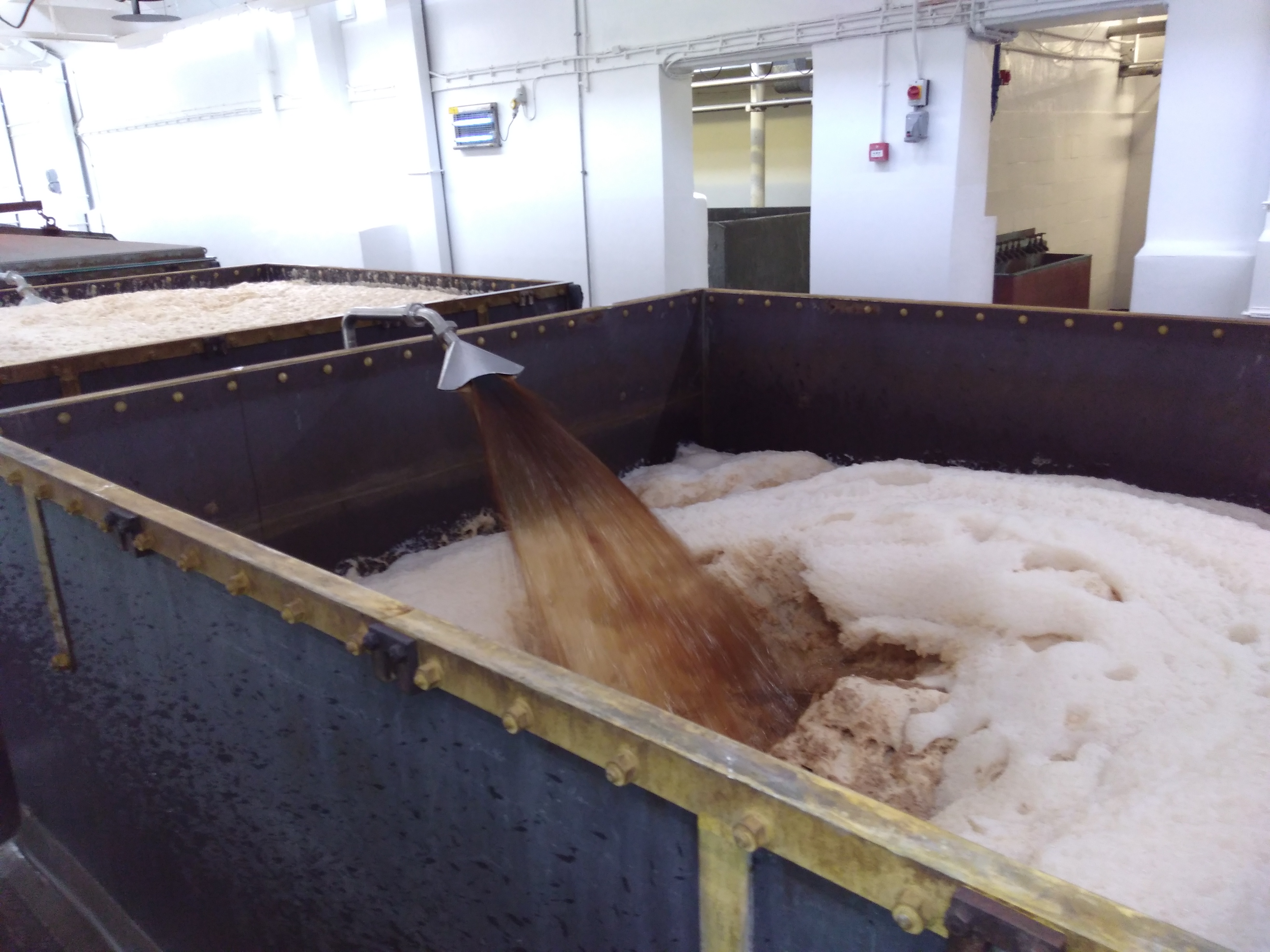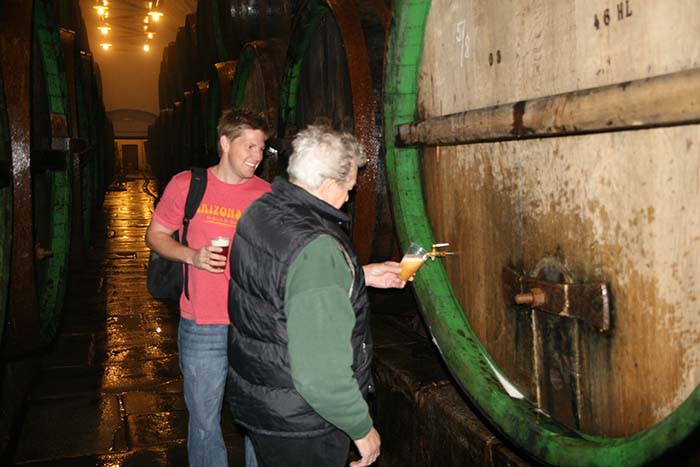I was lucky enough to be stationed in Germany for nine years and I love a good German Hefe Weizen, especially when you swirl the yeast in the bottom of the bottle and pour it in…..”smack, smack mmmmmm, beer” Anyway;
Some background: I’ve brewed a few five gallon batches and fermented with Imperial Organic yeast G01 Stefon. The first one was fermented in a 7.9 gallon fermenter and it blew all the yeast out of the air lock. I essentially made a krystall weizen.
The next batch I did an open fermentation in a 10 gallon plastic wine fermenter. I put a nylon bucket cover on top then placed the (loose fitting) lid on. Good thing because the krausen actually made it to the top of the fermenter and was stopped by the nylon. Fermented for about three days then transferred to secondary then to keg. Turned out pretty good.
Brewed again yesterday, fermenting away in my chest freezer. The two issues with open fermentation are contamination and oxidation.
- My thinking is that the nylon bag and lid should stop virtually all contamination from falling in the top. I’ll skim the trub off the top of the krausen so I can retain the yeast.
- Oxidation. I know about the ideal gas law. My freezer is full of CO2; I can light my lighter and it will extinguish the flame when it reaches the lip of the freezer. Any thoughts on leaving the beer in the fermenter until packaging instead of transferring to secondary? My thinking is if I keep the freezer lid closed after fermentation slows, very little oxygen will infiltrate the freezer while waiting for fermentation to finish.
- Yes, I could use a blow off tube in my 7.9 gal fermenter, but I’ll lose most of the yeast. And I’m too lazy to install a tube big enough to accommodate the fermentation. That and I have a 10 gallon wine fermenter sitting in the corner collecting dust, why not use it.
Prost!
Rudy
Some background: I’ve brewed a few five gallon batches and fermented with Imperial Organic yeast G01 Stefon. The first one was fermented in a 7.9 gallon fermenter and it blew all the yeast out of the air lock. I essentially made a krystall weizen.
The next batch I did an open fermentation in a 10 gallon plastic wine fermenter. I put a nylon bucket cover on top then placed the (loose fitting) lid on. Good thing because the krausen actually made it to the top of the fermenter and was stopped by the nylon. Fermented for about three days then transferred to secondary then to keg. Turned out pretty good.
Brewed again yesterday, fermenting away in my chest freezer. The two issues with open fermentation are contamination and oxidation.
- My thinking is that the nylon bag and lid should stop virtually all contamination from falling in the top. I’ll skim the trub off the top of the krausen so I can retain the yeast.
- Oxidation. I know about the ideal gas law. My freezer is full of CO2; I can light my lighter and it will extinguish the flame when it reaches the lip of the freezer. Any thoughts on leaving the beer in the fermenter until packaging instead of transferring to secondary? My thinking is if I keep the freezer lid closed after fermentation slows, very little oxygen will infiltrate the freezer while waiting for fermentation to finish.
- Yes, I could use a blow off tube in my 7.9 gal fermenter, but I’ll lose most of the yeast. And I’m too lazy to install a tube big enough to accommodate the fermentation. That and I have a 10 gallon wine fermenter sitting in the corner collecting dust, why not use it.
Prost!
Rudy









![Craft A Brew - Safale S-04 Dry Yeast - Fermentis - English Ale Dry Yeast - For English and American Ales and Hard Apple Ciders - Ingredients for Home Brewing - Beer Making Supplies - [1 Pack]](https://m.media-amazon.com/images/I/41fVGNh6JfL._SL500_.jpg)






















































